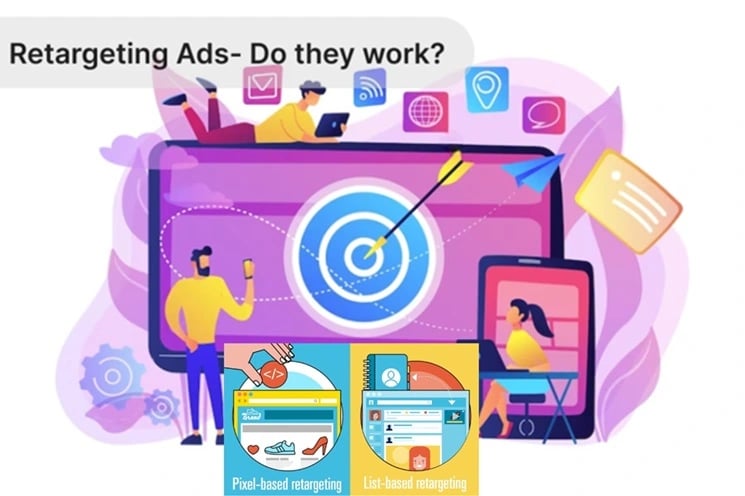
As a business owner, you’ve invested time, money, and effort into creating a website that attracts customers and generates leads. But have you ever wondered why users leave your website soon after they enter it? You’re not alone. High bounce rates can be frustrating, especially when you’re unsure of what’s driving users away. The good news is that identifying the reasons behind this phenomenon is easier than you think. By paying attention to metrics such as design, loading time, ads, and mobile compatibility, you can uncover the underlying issues that are causing users to abandon your website. In this article, we’ll explore the top 10 reasons why users leave a website, and what you can do to prevent it. At Mister Nguyen Agency, we understand the importance of creating a seamless user experience that drives conversions and grows your business. Let’s dive in and discover the secrets to keeping your users engaged.
Reasons Why Users Leave a Website
To ensure a successful website, it’s crucial to understand why users leave your website soon after they enter it. High bounce rates can indicate issues with your website’s design, functionality, and mobile compatibility. Luckily, discovering the root cause of the problem is easier with the tools available today.
Non-Intuitive Design
One of the primary reasons users leave a website is due to non-intuitive design. A well-designed website should provide a smooth customer journey, making it easy for users to find what they’re looking for. However, if your website’s design is cluttered, confusing, or hard to navigate, users will quickly lose interest and leave.
For instance, if your website has a complex layout, users may struggle to find the information they need, leading to frustration and a high bounce rate. Similarly, if your website’s design is not responsive, users may encounter issues when accessing your website on mobile devices, causing them to leave your website altogether.
Impact on User Experience
Any issues with your website’s design or functionality can significantly impact user experience. When users encounter problems while navigating your website, they’re likely to feel frustrated, leading to a negative experience. This can result in users leaving your website and searching for alternative options.
Moreover, a poor user experience can also affect your business’s reputation and credibility. If users have a negative experience on your website, they’re unlikely to return, and may even share their negative experience with others, potentially harming your business’s reputation.
Understanding the importance of user experience is crucial in today’s digital landscape. By prioritizing user experience, you can create a website that’s intuitive, easy to navigate, and provides value to your users. This, in turn, can lead to increased engagement, conversions, and ultimately, business success.
Understanding Why Users Leave a Website
Any website owner knows that a high bounce rate can be a major concern. But have you ever stopped to think about why users leave your website in the first place? Thread on What are the reasons why visitors leave websites forever? there are several reasons why users abandon a website. In this section, we’ll explore some of the most common reasons why users leave a website and what you can do to prevent it.
Slow Loading Time
One of the most frustrating experiences for users is a slow-loading website. Half of your visitors expect your website to load within three seconds, and if it doesn’t, they’ll quickly lose patience and leave. Slow loading times can be caused by a variety of factors, including large image files, too many HTTP requests, and poorly optimized code.
To avoid slow loading times, use tools like Page Speed Insights to analyze your website’s loading speed and identify areas for improvement. You can also consider using a headless CMS platform to significantly improve your site speed. By optimizing your website’s loading time, you can reduce bounce rates and improve user satisfaction.
Impact on Search Engine Rankings
With search engines like Google, loading time is a critical factor in determining search engine rankings. A slow-loading website can negatively impact your search engine rankings, making it harder for users to find your website in the first place. This can lead to a vicious cycle of low traffic and high bounce rates.
It’s important to prioritize loading time when optimizing your website for search engines. By improving your website’s loading speed, you can improve your search engine rankings and drive more traffic to your website.
Optimization Techniques
On the surface, optimizing your website’s loading time may seem like a daunting task. However, there are several techniques you can use to improve your website’s performance. One technique is to use caching to reduce the number of HTTP requests made to your server. You can also optimize your images by compressing them and using lazy loading.
Engine optimization is critical to improving your website’s loading time. By using tools like PageSpeed Insights and optimizing your code, you can significantly improve your website’s performance and reduce bounce rates.
By understanding why users leave your website, you can take steps to improve your website’s performance and reduce bounce rates. In the next section, we’ll explore more reasons why users leave a website and what you can do to prevent it.
Reasons Why Users Leave a Website
Keep reading to discover the reasons why users leave a website, and what you can do to prevent it.
Overwhelming Ads
Any website that relies on ad revenue must find a balance between generating income and providing a good user experience. If your website is cluttered with ads, it can be overwhelming for users, leading to a high bounce rate. Users visit your website for the content, not to be bombarded with ads. Make sure that your ads are strategically placed and don’t interfere with the user’s ability to access your content.
Additionally, consider the type of ads you’re displaying. Are they relevant to your content and target audience? Are they intrusive or do they pop up unexpectedly? By optimizing your ad placement and ensuring that they’re relevant to your users, you can reduce the likelihood of users leaving your website due to overwhelming ads.
Balancing Revenue with User Experience
An imperative aspect of running a successful website is finding a balance between generating revenue and providing a good user experience. You need to ensure that your website is designed to meet the needs of your users while also generating income through ads, leads, or sales. By understanding your target audience and their needs, you can create a website that meets their expectations and provides a seamless user experience.
It’s crucial to remember that users are the lifeblood of your website. Without them, you won’t generate revenue or achieve your business goals. By prioritizing user experience and ensuring that your website is designed with their needs in mind, you can increase engagement, reduce bounce rates, and ultimately drive more conversions.
Best Practices for Ad Placement
Experience has shown that users are more likely to engage with ads that are strategically placed and relevant to their interests. In the matter of ad placement, it’s imperative to consider the user’s journey and ensure that ads are displayed at the right moment. For example, placing ads above the fold or in the header of your website can be effective, as users are more likely to see them.
Additionally, consider using native ads that blend in with your website’s design and content. These ads are less intrusive and more likely to engage users. By following best practices for ad placement, you can increase ad revenue while also providing a good user experience.
Balancing ad revenue with user experience is crucial for the success of your website. By understanding your target audience and their needs, you can create a website that meets their expectations and provides a seamless user experience. At Mister Nguyen Agency, we specialize in helping businesses like yours create effective website designs that drive engagement and conversions. Contact us today to learn more about our services, including social media, design, and brand development.
Irritating Elements That Drive Users Away

Now, let’s dive deeper into some of the most common reasons why users leave a website.
Irritating Pop-Ups
With the rise of online marketing, pop-ups have become an important tool for businesses to capture leads and promote their products. However, when not used correctly, they can be a major turnoff for users. You’ve probably experienced it yourself – you’re browsing a website, and suddenly, a pop-up window appears out of nowhere, blocking your view and disrupting your user experience. It’s frustrating, to say the least.
Pop-ups can be especially irritating when they’re not relevant to the user’s interests or when they’re too frequent. Imagine visiting a website and being bombarded with multiple pop-ups asking you to sign up for a newsletter or download an e-book. It’s overwhelming and can lead to a high bounce rate.
Impact on User Engagement
An overwhelming number of pop-ups can significantly impact user engagement. When users are constantly interrupted by pop-ups, they’re less likely to engage with your content, explore your website, or complete a purchase. In fact, according to a study, 70% of users reported that they would leave a website if it had too many pop-ups.
User engagement is crucial for any business, as it directly affects conversion rates, lead generation, and ultimately, revenue. When users are engaged, they’re more likely to trust your brand, share your content, and become loyal customers.
Moreover, pop-ups can also negatively impact your website’s ranking on search engines. Google’s algorithm takes into account user experience, and if your website is plagued by intrusive pop-ups, it may be penalized in search engine rankings.
Alternatives to Pop-Ups
Impact of pop-ups on user experience is undeniable. So, what are the alternatives? Instead of using pop-ups, you can try using sticky bars, slide-ins, or opt-in forms that are less intrusive and more user-friendly. These alternatives can help you capture leads without disrupting the user experience.
Popups can be replaced with more subtle and less intrusive methods, such as using a hello bar or a slide-in form that appears after a user has spent a certain amount of time on your website. This way, you can still capture leads without overwhelming your users.
Bear in mind, the key is to find a balance between capturing leads and providing a seamless user experience. By using alternative methods, you can increase user engagement, reduce bounce rates, and ultimately, drive more conversions.
Poor Mobile Performance
Your website’s mobile performance is crucial in today’s digital landscape. With over 50% of web traffic coming from mobile devices, it’s important to ensure that your website is optimized for mobile users.
Poor Mobile Performance
When your website doesn’t perform well on mobile devices, it can lead to high bounce rates, low conversions, and a loss of valuable leads. Mobile users expect a seamless and fast experience, and if your website fails to deliver, they’ll quickly move on to a competitor’s site.
Importance of Mobile Optimization
The importance of mobile optimization cannot be overstated. A mobile-friendly website is no longer a nice-to-have, but a must-have. The majority of your customers are accessing your website on their mobile devices, and if your website isn’t optimized for mobile, you’re losing out on potential business.
It’s important to test your website’s mobile performance regularly to identify any issues that may be driving users away. With tools like Google’s Page Speed Insights, you can analyze your website’s loading time and identify areas for improvement.
Testing and Ensuring Mobile Compatibility
For a seamless mobile experience, it’s crucial to test your website’s compatibility across various mobile devices and browsers. Ensure that your website’s design, layout, and content are optimized for mobile users.
Testing your website’s mobile compatibility is an ongoing process. As new devices and browsers emerge, it’s important to continually test and optimize your website to ensure that it remains mobile-friendly.
Poor mobile performance can be a significant reason why users leave your website. By prioritizing mobile optimization and testing, you can improve your website’s user experience, increase conversions, and drive business growth.
Unlike many other aspects of your website, the checkout process is a critical step where users are most likely to abandon their carts and leave your website. According to Baymard Institute, the average cart abandonment rate is around 69.57%. This means that nearly 7 out of 10 customers who add items to their carts will not complete the purchase.
Complicated Checkout Process
An overly complicated checkout process can be a major turnoff for customers. When users encounter multiple steps, confusing forms, and unclear instructions, they are more likely to abandon their carts and leave your website. In fact, a study by User Testing found that 28% of cart abandonments occur due to a complicated checkout process.
Imagine yourself in the shoes of your customers. You’ve added items to your cart, and now you’re ready to check out. But, instead of a seamless experience, you’re faced with a lengthy form that requires you to create an account, enter multiple addresses, and answer unnecessary questions. Wouldn’t you feel frustrated and want to leave the website?
Simplifying the Checkout Experience
With a simplified checkout process, you can reduce cart abandonment rates and increase conversions. Here are some tips to help you achieve this:
Firstly, make sure your checkout process is easy to navigate. Break down the process into fewer steps and use clear and concise language. Avoid asking for unnecessary information and provide options for guest checkout or social media login.
Secondly, ensure that your checkout process is mobile-friendly. With more and more users shopping on their mobile devices, it’s crucial to provide a seamless experience across all devices.
Simplifying the checkout experience can lead to a significant reduction in cart abandonment rates. In fact, a study by Amazon found that a simplified checkout process can increase conversions by up to 35%.
Simplifying the checkout experience is not just about reducing steps; it’s also about providing a seamless and intuitive experience. By using design elements such as progress bars, clear calls-to-action, and minimal form fields, you can create a checkout process that is both efficient and user-friendly.
Reducing Cart Abandonment Rates
With a simplified checkout process, you can reduce cart abandonment rates and increase conversions. Here are some additional tips to help you achieve this:
Firstly, make sure to provide clear and transparent pricing information. Avoid adding hidden fees or surprise costs that can deter customers from completing their purchase.
Secondly, offer multiple payment options to cater to different customer preferences. This can include credit cards, PayPal, Apple Pay, and other popular payment methods.
Thirdly, provide a sense of security and trust by displaying trust badges, SSL certificates, and customer reviews. This can help alleviate any concerns customers may have about entering their payment information.
To reduce cart abandonment rates, it’s crucial to understand the reasons behind this behavior. By analyzing user behavior, identifying pain points, and simplifying the checkout process, you can create a seamless experience that encourages customers to complete their purchase.
Be mindful of, reducing cart abandonment rates is an ongoing process that requires continuous testing and optimization. By staying vigilant and making data-driven decisions, you can create a checkout experience that drives conversions and grows your business.
Reasons Why Users Leave a Website
Once again, we’re submerging into the world of website optimization, and today, we’re exploring the reasons why users leave a website. As a business owner, understanding these reasons is crucial to improving your website’s performance, increasing conversions, and ultimately, growing your customer base.
Poor Content Quality
Content is king, and if your website’s content doesn’t meet the expectations of your visitors, they’ll leave. It’s as simple as that. According to a study, 87% of shoppers conduct research before making an online purchase, which means they’re looking for valuable, informative, and engaging content. If your content doesn’t provide that, you’ll lose potential customers.
Creating low-quality content can be detrimental to your website’s performance. It’s imperative to evaluate your analytics and monitor what works well and what doesn’t. Avoid writing content that’s not SEO-friendly, and make sure your articles are structured, featuring short paragraphs, relevant keywords, and valuable information on a particular topic.
Importance of Valuable and Informative Content
The importance of valuable and informative content cannot be overstated. Your content needs to be professional, engaging, and provide actual value to your visitors. This is the best way to keep a visitor on your website and increase page views, which ultimately leads to lower bounce rates and improved website ranking.
For instance, using imagery to break up walls of text is an excellent way to keep the reader’s attention. Moreover, flawless grammar and avoiding abbreviations, bad grammar, and excessive exclamation marks throughout the content will help you appear professional and credible.
Creating Engaging and SEO-Friendly Content
Content is not just about providing value; it’s also about creating an engaging experience for your visitors. Creating SEO-friendly content is crucial to improving your website’s ranking and driving more traffic to your site.
Another important aspect of creating engaging content is to make it scannable. Use headings, subheadings, and bullet points to make your content easy to read and understand. This will help your visitors quickly find the information they’re looking for, increasing the chances of them staying on your website.
For example, using tools like HotJar vs Google Analytics can help you understand how your visitors interact with your content, allowing you to make data-driven decisions to improve your content strategy.
By understanding these reasons why users leave a website, you can take steps to improve your website’s performance, increase conversions, and grow your customer base. At Mister Nguyen Agency, we specialize in helping businesses like yours create engaging, informative, and SEO-friendly content that drives results. Contact us today to learn more about how we can help you improve your website’s performance.
Reasons Why Users Leave a Website
Many website owners struggle to keep their visitors engaged, often wondering why users leave their website soon after entering it. The truth is, there are several reasons behind this phenomenon, and identifying them is crucial to improving your website’s performance.
Auto-Play Videos
The inclusion of auto-play videos on your website can be a major turnoff for users. When a video starts playing automatically, it can be distracting, annoying, and even slow down the page loading speed. This can lead to a poor user experience, causing visitors to leave your website in search of a better alternative.
In today’s digital age, users are bombarded with information from all directions. They visit your website to read, explore, and maybe watch a video if they want to. By forcing them to watch a video, you’re taking away their control and autonomy, which can be frustrating.
Impact on User Experience and Page Loading Speed
Experience has shown that auto-play videos can significantly impact user experience and page loading speed. When a video starts playing automatically, it consumes bandwidth and system resources, slowing down the page loading speed. This can be particularly problematic for users with slower internet connections or older devices.
Videos can also disrupt the user’s flow and attention, making it difficult for them to focus on the content they’re interested in. This can lead to a higher bounce rate, as users become frustrated and leave your website in search of a better experience.
Additionally, videos can also affect your website’s search engine optimization (SEO) rankings. Search engines like Google prioritize websites that provide a good user experience, and slow page loading speeds can negatively impact your rankings.
Alternative Video Strategies
An alternative approach to auto-play videos is to provide users with the option to play videos manually. This approach respects the user’s autonomy and allows them to control their experience. You can achieve this by using click-to-play buttons or hover-to-play effects.
Another strategy is to use silent videos or animations that don’t disrupt the user’s experience. These can be used to add visual interest to your website without overwhelming the user.
Section 8 highlights the importance of considering the user’s experience when incorporating videos on your website. By providing users with control and options, you can improve engagement and reduce bounce rates.
Do not forget, as a business owner, your website is a crucial tool for attracting and retaining customers. By optimizing your website’s design, functionality, and user experience, you can increase conversions, leads, and ultimately, drive business growth. At Mister Nguyen Agency, we specialize in helping businesses like yours create a strong online presence through effective web design, social media, and brand design strategies. Contact us today to learn more about how we can help you achieve your business goals.
Missing Call to Action
For instance, if you’re running an e-commerce website, you want your customers to make a purchase. However, if your website lacks a clear CTA, such as “Buy Now” or “Add to Cart,” your customers might not know what to do next, leading them to leave your website.
This is especially crucial for businesses that rely heavily on leads and conversions. Without a clear CTA, you’re crucially leaving money on the table. According to a study, websites with clear CTAs can increase their conversion rates by up to 25%.
Importance of Clear Calls to Action
An effective CTA should be attention-grabbing, easy to understand, and actionable. It should also be prominently displayed on your website, preferably above the fold, so that visitors can’t miss it.
Moreover, a clear CTA helps to guide your visitors through the sales funnel, increasing the chances of conversion. For example, if you’re running a blog, a clear CTA can encourage visitors to sign up for your newsletter or download a free e-book.
Missing a clear CTA can lead to confusion and frustration among your visitors, causing them to leave your website and seek alternative options.
Optimizing Landing Pages for Conversions
Importance of optimizing landing pages for conversions cannot be overstated. A well-designed landing page with a clear CTA can increase conversions by up to 50%.
When optimizing your landing pages, make sure to remove any distractions, such as unnecessary links or pop-ups, and focus on the main goal of the page. Use attention-grabbing headlines, compelling copy, and eye-catching visuals to draw visitors’ attention to the CTA.
Action needs to be taken to ensure that your landing pages are optimized for conversions. By doing so, you can increase leads, sales, and revenue for your business.
Reasons Why Users Leave a Website
For a website to be successful, it’s necessary to identify the reasons why users leave it soon after entering. One of the critical factors that contribute to this phenomenon is poor security.
Poor Security
Any website that fails to provide a secure environment for its users is likely to experience high bounce rates. When users feel that their personal information is at risk, they will quickly abandon a website. This is especially true for e-commerce websites where users are required to provide sensitive information such as credit card numbers and passwords.
Moreover, a website with poor security is vulnerable to hacking, which can lead to the injection of malicious code, slowing down the website, and undermining its performance. This can have a devastating impact on a business, leading to a loss of customers and revenue.
Importance of Website Security
With the increasing number of cyber-attacks, website security has become a top priority for businesses. It’s necessary to deploy security software and SSL certificates to ensure that a website is secure and trustworthy. This not only protects users’ information but also boosts their confidence in the website, leading to higher conversion rates and customer loyalty.
Website security is critical for building trust with customers. When users see that a website has an SSL certificate, they feel confident that their information is secure, and they are more likely to provide sensitive information, make purchases, and return to the website.
Deploying Security Software and SSL Certificates
Section 10 of our article highlights the importance of deploying security software and SSL certificates to prevent hacking and ensure website security. This is especially crucial for e-commerce websites where users provide sensitive information.
To ensure website security, it’s necessary to install an SSL certificate, such as a cheap wildcard SSL certificate, which can secure the main domain and first-level subdomains with strong encryption. Additionally, deploying security software can help detect and prevent hacking attempts, ensuring that a website remains secure and trustworthy.
By prioritizing website security, businesses can build trust with their customers, increase conversion rates, and ultimately drive revenue growth.
To wrap up
Following this exploration of the top reasons why users leave a website, it’s clear that there are numerous factors at play. As the owner of a business, it’s important to recognize that your website is often the first point of contact between you and your customers. It’s crucial to ensure that this interaction is seamless, engaging, and secure. At Mister Nguyen Agency, we understand the importance of creating a website that resonates with your target audience, drives conversions, and ultimately, grows your business.
By addressing the common issues outlined in this article, such as poor design, slow loading times, and overwhelming ads, you can significantly improve the user experience and reduce bounce rates. Bear in mind, your website is a reflection of your brand, and it’s important to invest time and resources into creating a platform that accurately represents your business values and mission. By doing so, you’ll be well on your way to attracting and retaining valuable leads, driving sales, and establishing a strong online presence. Don’t let your website become a barrier between you and your customers – take the necessary steps to create a website that truly resonates with your audience.











